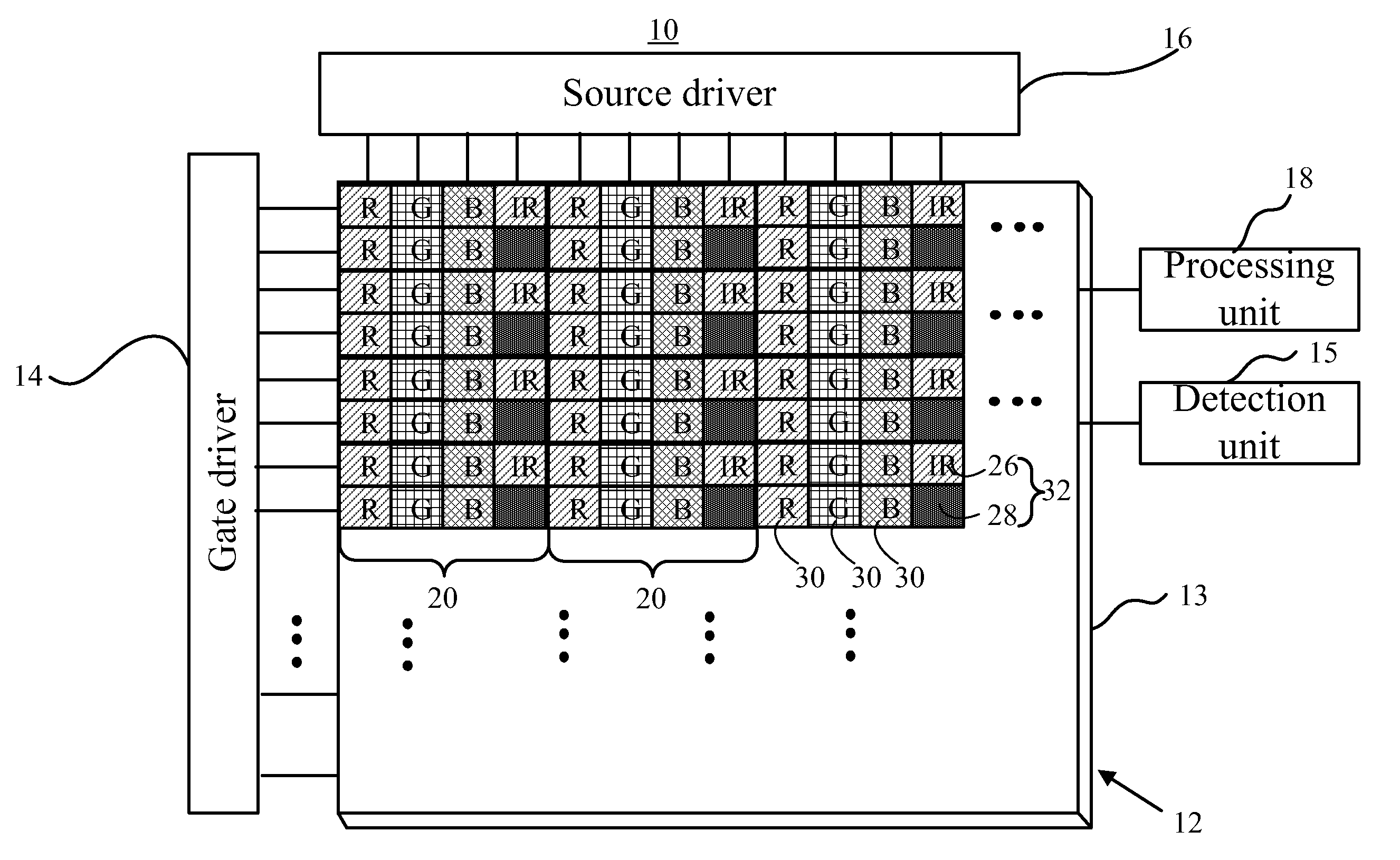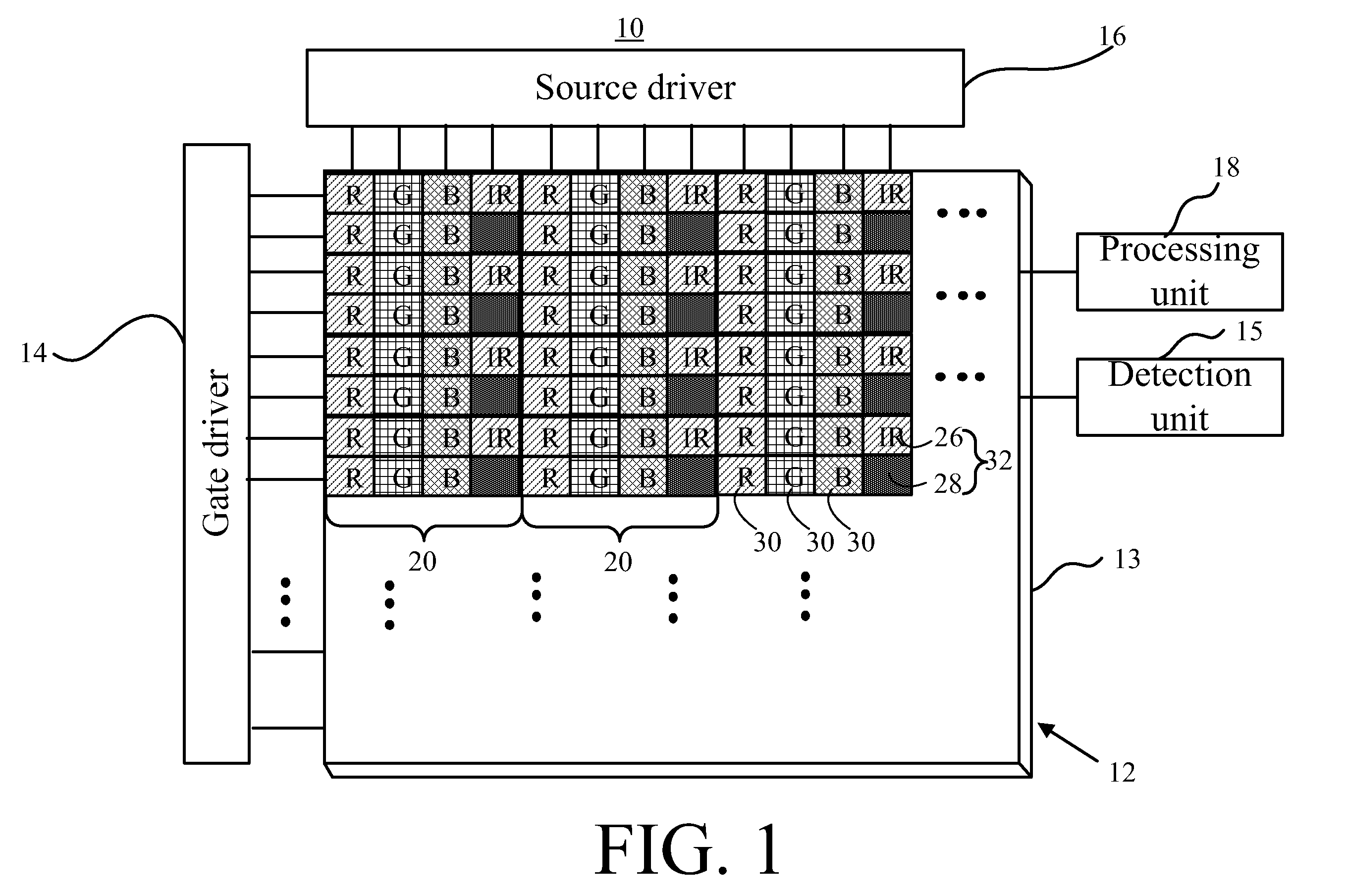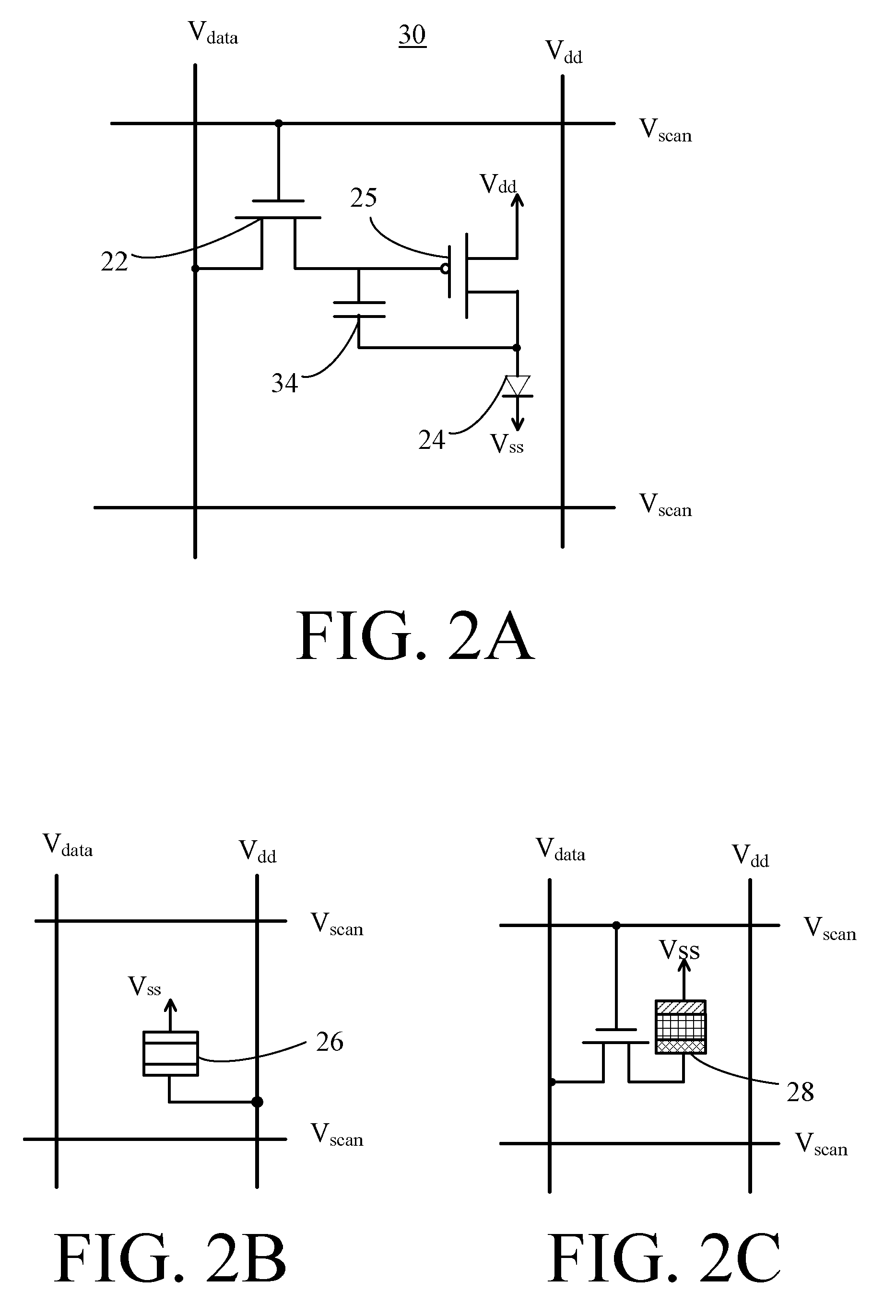Organic light emitting diode touch display
a light-emitting diode and touch display technology, which is applied in the direction of static indicating devices, cathode-ray/electron beam tube circuit elements, instruments, etc., can solve the problems of increased total thickness of the panel, weak backlight light, and reduced light transmittance of the oled panel
- Summary
- Abstract
- Description
- Claims
- Application Information
AI Technical Summary
Benefits of technology
Problems solved by technology
Method used
Image
Examples
Embodiment Construction
[0028]Referring to FIG. 1 showing a diagram of an OLED display 10 according to a preferred embodiment of the present invention, the OLED display 10 comprises an OLED panel 12, a gate driver 14, a source driver 16, a processing unit 18, and a detection unit 15. The OLED panel 12 comprises a substrate 13 having a display region formed by a plurality of pixel units 30, which represents the three primary colors—red, green, and blue (RGB)—respectively, and a plurality of infrared (IR) units 32. The IR unit 32 comprises an infrared emitting region 26 and an infrared sensitive region 28. The infrared emitting region 26 is employed to emit infrared rays, and the infrared sensitive region 28 is utilized to sense the infrared rays reflected from an object. As shown in FIG. 1, at least six pixel units 30 are arranged with one infrared unit 32.
[0029]Referring to FIG. 2A, 2B, and 2C, FIG. 2A illustrates an equivalent circuit diagram of the pixel unit 30 in FIG. 1 according to a first embodiment ...
PUM
 Login to View More
Login to View More Abstract
Description
Claims
Application Information
 Login to View More
Login to View More - R&D
- Intellectual Property
- Life Sciences
- Materials
- Tech Scout
- Unparalleled Data Quality
- Higher Quality Content
- 60% Fewer Hallucinations
Browse by: Latest US Patents, China's latest patents, Technical Efficacy Thesaurus, Application Domain, Technology Topic, Popular Technical Reports.
© 2025 PatSnap. All rights reserved.Legal|Privacy policy|Modern Slavery Act Transparency Statement|Sitemap|About US| Contact US: help@patsnap.com



